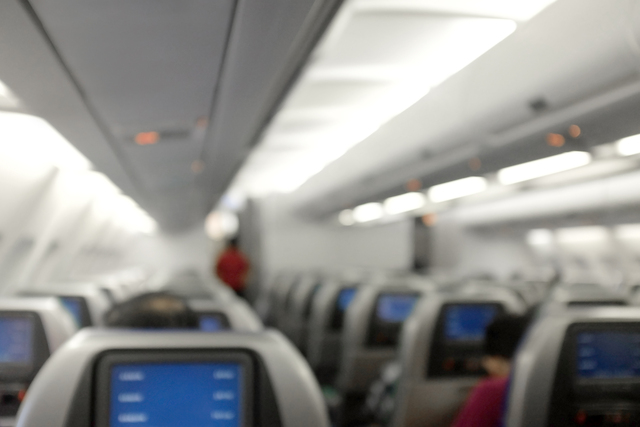Up in the air: the most common causes of in-flight accidents and injuries
Over the past decades, tech advances have made air travel increasingly more accessible and popular, particularly among people who travel long distances, with millions of flights taking off and billions of passengers flying each year to destinations all across the globe. This means things are getting pretty busy up in the air as the world is growing more connected.
Flying is not just the quickest and most convenient way to cover great distances, giving travellers the possibility to get to places that would have otherwise remained out of reach to them, but it’s also the safest mode of transportation. According to the latest statistics, the accident rate for air travel is extremely low, with only one accident for every 1.26 million flights. This means one is much more likely to arrive at their destination safe and sound if they travel by plane than by any other means of transport.
That’s not to say that flying is completely risk-free. And we’re not referring to catastrophic crashes that can claim the lives of hundreds of passengers in one fell swoop since these devastating occurrences are fortunately quite rare. Although the continuous improvements in safety have lowered the likelihood of fatal accidents considerably, there are other hazards that can put both crew members’ and passengers’ health and wellbeing at risk while flying.
This is not meant to exacerbate flying anxiety or aerophobia for anyone, but if you’re a frequent traveller or if you simply want to ensure a positive flight experience, being aware of the most common causes that could lead to in-flight accidents and injuries can help you stay safe and keep risks to a minimum.
Turbulences
Everyone wishes for smooth and gentle flights when they board a plane, but the reality is you might want to brace yourself up for some turbulences. Although not all journeys are disturbed by these disruptions in the air current, the phenomenon has increased in frequency significantly in recent years as a result of climate change and global warming. One study shows that the incidence of severe turbulences rose by 55% between 1979 and 2020.
Most turbulences are light and unlikely to lead to any serious issues or injuries. Modern aircraft systems allow pilots to identify and predict turbulences ahead of time so they can either avoid them or adjust the flight path accordingly and warn passengers that the ride is going to get a little (or a lot) bumpier, turning on the fasten seat belt sign.
But that’s not always the case. Extreme turbulence causing abrupt changes in altitude can also happen without warning and spell trouble for passengers, especially clear air turbulence (CAT), which is hard to detect. One such event happened in May this year when one man died and another 71 passengers were injured after a Boeing 777 travelling from London to Singapore was hit by severe turbulence, losing 178 feet in altitude in just four seconds. Passengers and crewmembers were tossed around the cabin, and the flight was forced to make an emergency landing in Bangkok.
Therefore, the risk of in-flight accidents related to turbulence should not be disregarded. Unbelted passengers can be hurled from their seats and bump against objects in the cabin, suffering all sorts of injuries, ranging from scratches and bruises to broken bones, burns and even fatal injuries.
Falling luggage
If you’re lucky enough to have a turbulence-free flight, you still need to watch out for other hazards like falling luggage. Unlike turbulence, which is responsible for a relatively small number of injured passengers every year, incidents involving luggage falling from overhead compartments account for a much larger number of in-flight injuries.
It’s not that uncommon for baggage bins to fling open mid-flight, either because they weren’t properly secured or due to faulty latches or turbulence, and their content to fall on unsuspecting passengers seated underneath. In fact, data shows that an estimated 5,000 airline passengers get injured every year by falling suitcases and bags. Passengers struck by these objects can suffer torn muscles, concussions, contusions, or even skull fractures and require medical care for their injuries.
Slips, trips and falls
Slips, trips and falls are among the most common causes of accidents and injuries in a variety of settings, and unfortunately, aircrafts make no exception. Since most commercial airplanes are quite cramped and there’s not much room to move around, passengers often trip and fall while walking along the aisle or inside the lavatory and injure themselves.
Trip and fall accidents during flight may result in minor injuries, but they can also be the cause of more serious issues like lacerations and concussions. Although most people tend to ignore these seemingly minor accidents, it’s always best to get checked by a doctor to rule out anything serious, especially when it comes to head injuries. Severe concussions have a high rate of misdiagnosis, so even medical practitioners can overlook the symptoms, which, in time, could lead to life-altering health issues. In the case of a medical misdiagnosis, one might want to read a guide on how to sue the NHS to make sure they receive the compensation they deserve.
Service-related injuries
Airplane services are meant to make the in-flight experience more comfortable and pleasant. Unfortunately, things can sometimes go terribly wrong when the food and beverage cart gets rolled out to serve passengers. Although it might seem like no harm can come out of food service, these bulky carts may strike passengers as they are pushed down the aisle, or hot liquids can spill over causing burns.
While airlines take extensive safety measures to ensure everything goes smoothly and no passenger gets injured while flying, staying alert and aware of the realities of air travel can protect you from unpleasant events that might negatively impact your health.

